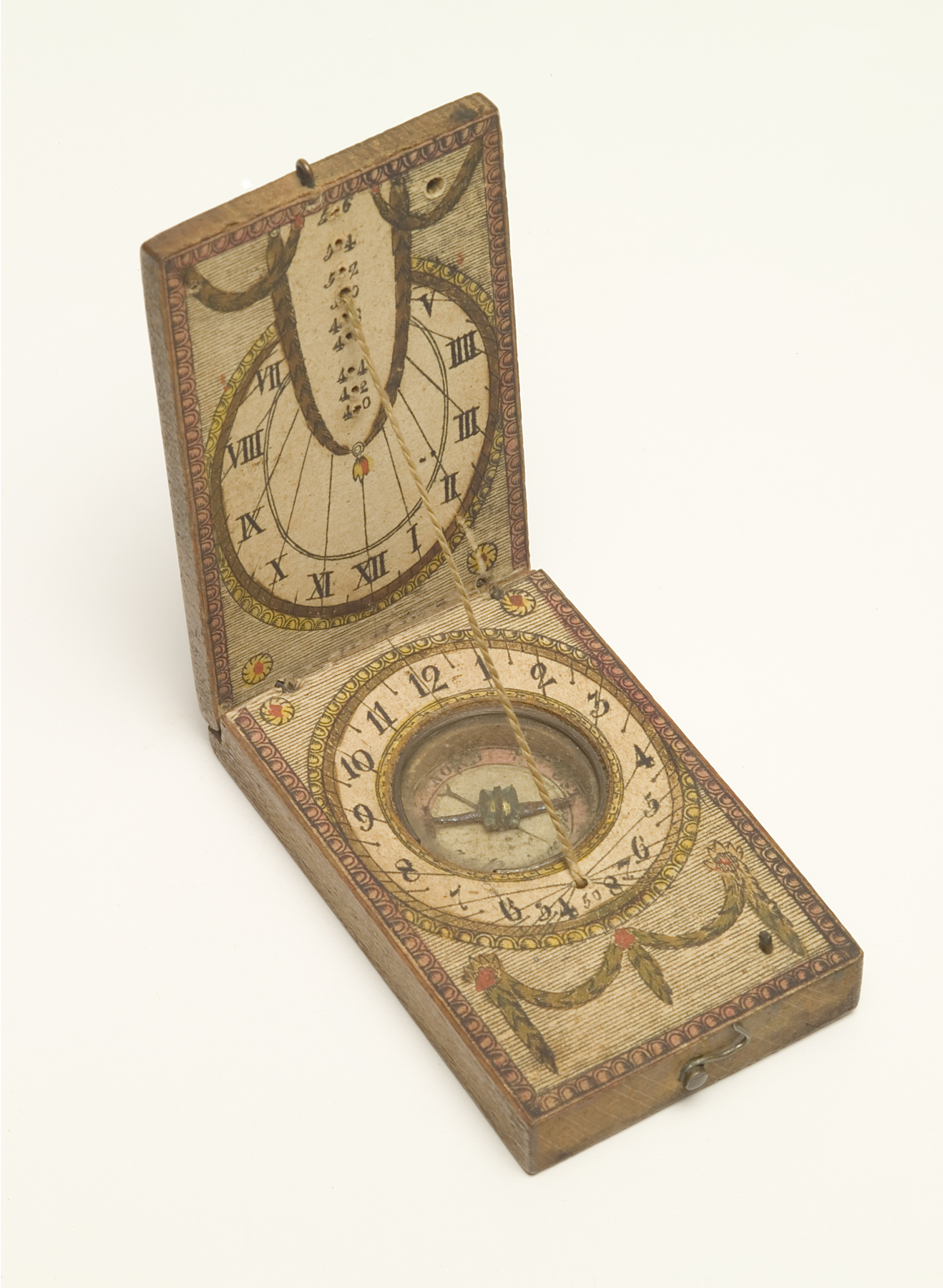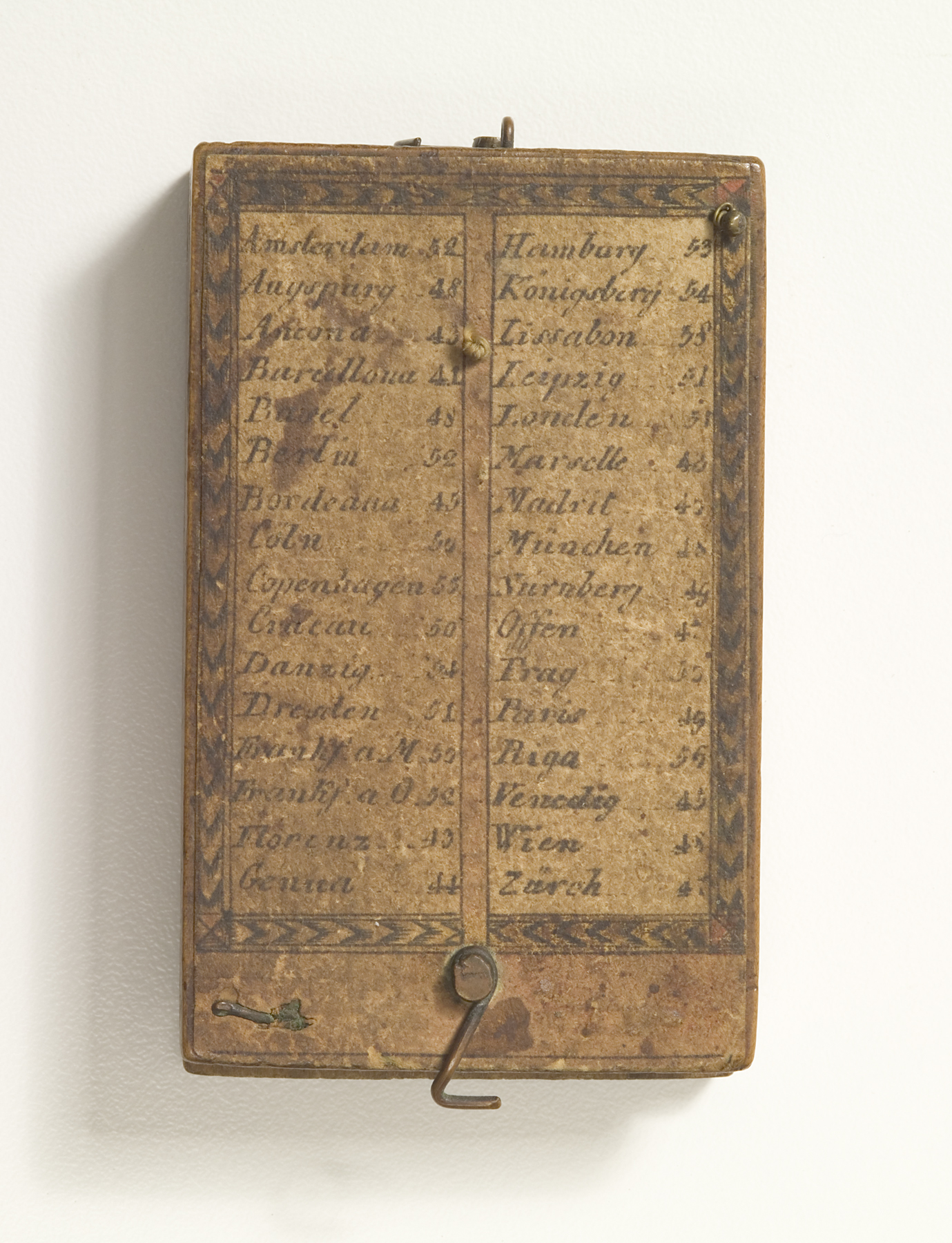pocket sundial, T. G. Kleininger
Artwork Overview
T. G. Kleininger, artist
pocket sundial,
1700s
Where object was made: Germany
Material/technique: wood
Credit line: The Doctor Maurice L. Jones Collection
Accession number: 1952.0063
Not on display
If you wish to reproduce this image, please submit an image request






